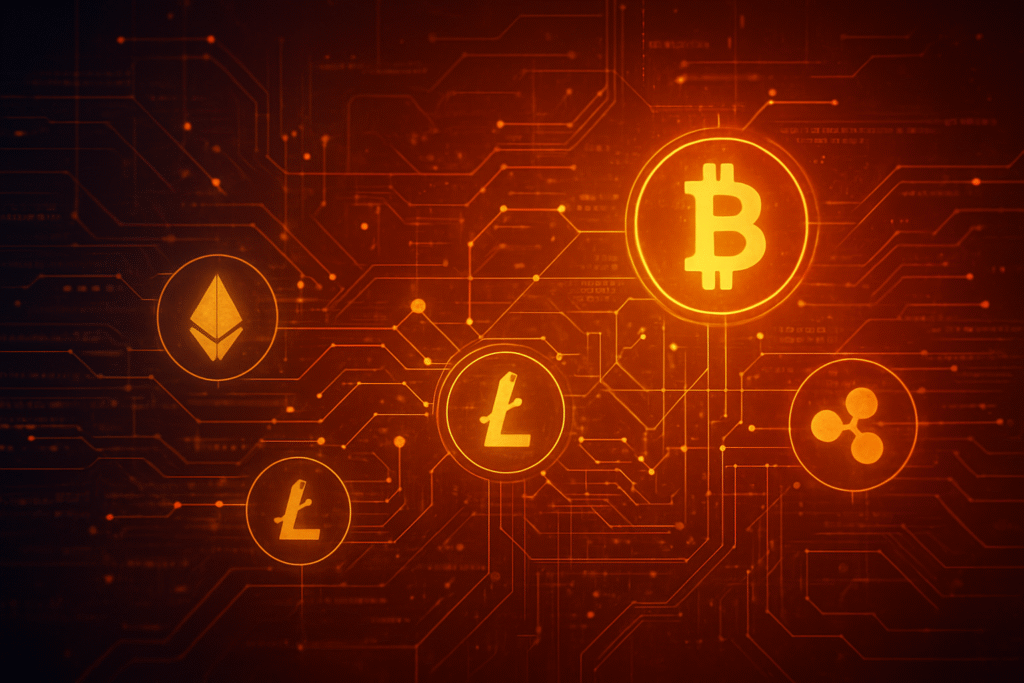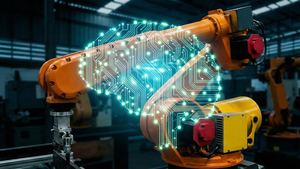
The cryptocurrency landscape is undergoing a profound transformation, evolving far beyond its foundational assets, Bitcoin (BTC) and stablecoins. A new wave of innovation is ushering in an era of diverse digital assets, propelled by advancements in blockchain technology, novel use cases, and an increasing convergence with traditional finance. This shift signals a maturation of the crypto ecosystem, moving from speculative trading to foundational technologies poised to reshape global finance and digital interaction.
This evolution is critical because it addresses long-standing challenges in scalability, privacy, and real-world utility, paving the way for mainstream adoption. From the tokenization of real-world assets (RWAs) to the emergence of decentralized physical infrastructure networks (DePIN) and the integration of artificial intelligence (AI) with Web3, these developments are expanding the very definition of what a digital asset can be. The immediate market reaction has been one of growing institutional interest and a surge in developer activity, signaling a collective recognition of the immense potential held within these burgeoning sectors.
Market Impact and Future Price Action
While the focus here is on future trends rather than past price action, the potential market impact of these emerging digital assets is profound. The tokenization of Real-World Assets (RWAs) alone is projected to exceed $10 trillion by 2030, a figure that underscores the massive influx of capital and liquidity expected to flow into the crypto ecosystem. This trend, involving the conversion of tangible and intangible assets like real estate, bonds, and intellectual property into digital tokens, will democratize access to investments, increase market efficiency, and likely drive significant trading volumes on new platforms. As mainstream financial institutions embrace RWA tokenization, we can anticipate a blurring of lines between traditional and decentralized finance, leading to new investment products and potentially stabilizing market volatility through broader asset backing.
Emerging technologies like Zero-Knowledge Proofs (ZKPs) and advanced Layer 2 solutions are set to drastically improve blockchain scalability and privacy. This will enable high-throughput applications, making decentralized finance (DeFi) protocols more attractive to institutional players and retail users alike. The enhanced privacy offered by ZKPs could unlock new use cases in sensitive sectors like healthcare and government, drawing in significant investment and fostering a new class of privacy-focused digital assets. While specific price movements are speculative, the overall trend points towards increased market capitalization across these innovative sectors, driven by utility, institutional adoption, and improved underlying technology. The comparison to past cycles suggests that foundational technological improvements often precede significant market expansions, positioning these emerging assets for substantial long-term growth.
Community and Ecosystem Response
The crypto community's response to these emerging trends is overwhelmingly positive and buzzing with innovation. Social media platforms like Twitter (now X) and Reddit are vibrant with discussions surrounding the transformative potential of RWA tokenization, the privacy enhancements of ZKPs, and the scalability offered by Layer 2 solutions. Crypto influencers and thought leaders frequently highlight projects pushing the boundaries in areas like Decentralized Physical Infrastructure Networks (DePINs), Regenerative Finance (ReFi), and the convergence of Web3 with Artificial Intelligence (dAI).
This excitement translates into tangible development across the ecosystem. DeFi protocols are evolving to integrate tokenized RWAs, creating new lending and borrowing opportunities backed by real-world collateral. NFT projects are exploring utility beyond collectibles, with discussions around fractionalized ownership of high-value physical assets and their role in Web3 gaming and metaverse economies. Broader sentiment reflects a shift from purely speculative interest to a focus on utility, sustainability, and real-world impact. The community is actively engaged in building, testing, and advocating for these next-generation digital assets, viewing them as crucial for the long-term viability and mainstream adoption of the entire blockchain paradigm.
What's Next for Crypto
The short-term implications for the crypto market involve a continued surge in development and investment into projects focusing on RWA tokenization, ZKPs, Layer 2 scaling, and decentralized AI. We can expect to see more pilot programs and partnerships between traditional financial institutions and blockchain companies. Regulatory clarity, particularly around tokenized securities and digital identity, will serve as a significant catalyst, potentially unlocking trillions in institutional capital. In the long term, these trends are poised to fundamentally redefine financial markets, supply chains, and digital interactions.
Key developments to watch include the maturation of interoperability solutions, allowing seamless asset and data transfer across disparate blockchains, and the widespread adoption of decentralized identity (DID) solutions, empowering individuals with self-sovereign control over their data. Strategic considerations for projects involve prioritizing robust security, user-friendly interfaces, and clear regulatory compliance pathways. Investors should look beyond traditional metrics, focusing on projects with strong utility, proven technology, and clear roadmaps for integrating with real-world applications. Possible scenarios range from a gradual, steady integration of digital assets into existing systems to a more disruptive, rapid overhaul of traditional finance, with the latter becoming increasingly likely as technological advancements accelerate and regulatory frameworks adapt.
Bottom Line
For crypto investors and enthusiasts, the key takeaway is that the digital asset landscape is diversifying rapidly, offering opportunities far beyond Bitcoin and stablecoins. The future lies in utility-driven tokens and protocols that solve real-world problems. The tokenization of Real-World Assets (RWAs) represents a monumental shift, democratizing access to high-value investments and bridging the gap between traditional finance and blockchain. Technologies like Zero-Knowledge Proofs (ZKPs) and Layer 2 solutions are critical for addressing scalability and privacy, making blockchain viable for enterprise and mainstream adoption.
The long-term significance of these trends cannot be overstated; they represent the foundation for a more efficient, transparent, and inclusive global financial system. As of November 4, 2025, we are witnessing the early stages of this transformation. Important metrics to monitor include the total value locked (TVL) in RWA-backed DeFi protocols, the number of institutional partnerships announced, and the progress of regulatory frameworks in major jurisdictions. Keep an eye on advancements in interoperability protocols and the adoption rates of decentralized identity solutions, as these will be crucial indicators of mainstream integration. The future of digital assets promises a world where blockchain technology is seamlessly integrated into our daily lives, driving unprecedented innovation and economic opportunity.
This article is for informational purposes only and does not constitute financial or investment advice. Cryptocurrency investments carry significant risk.








